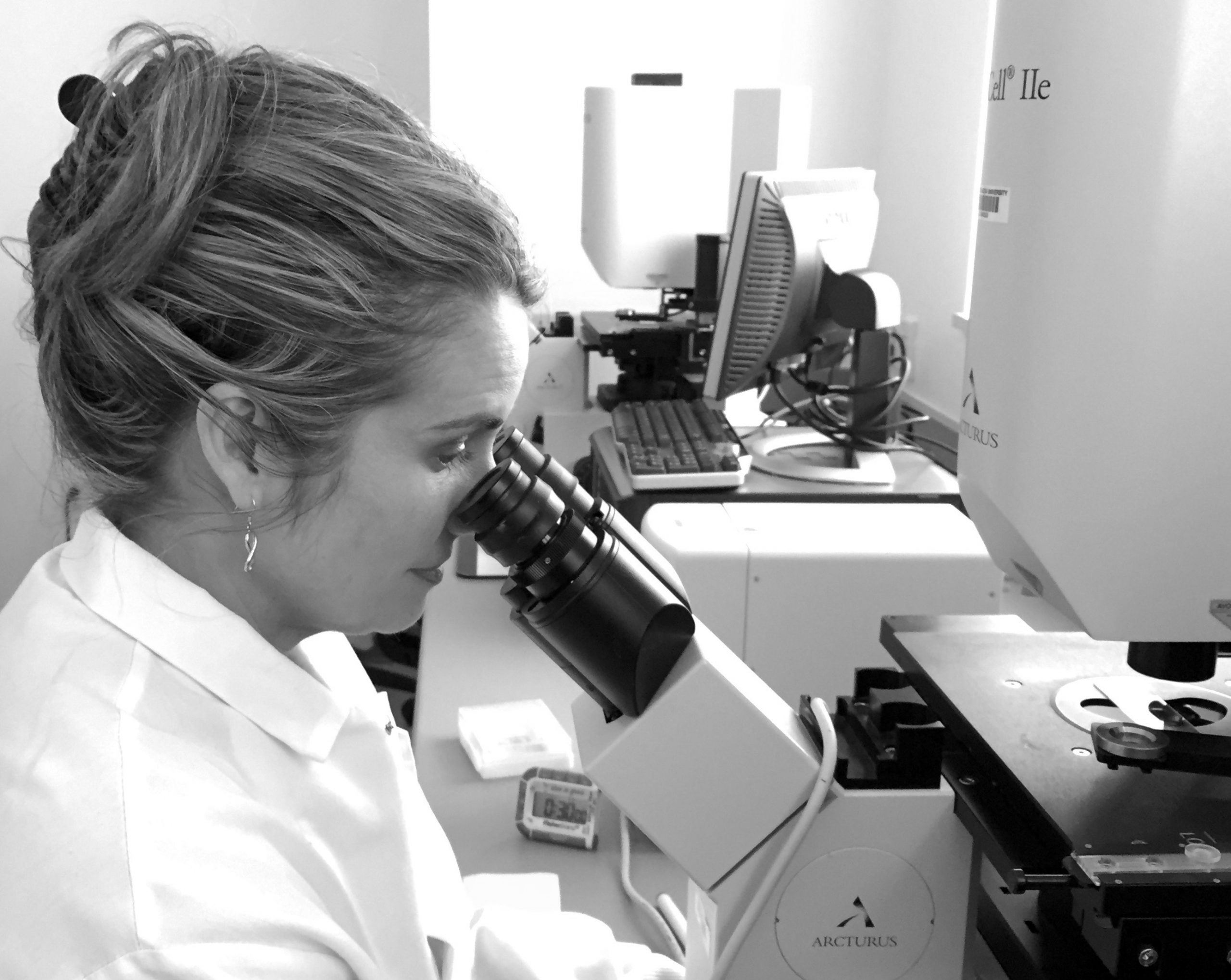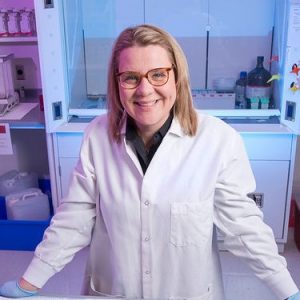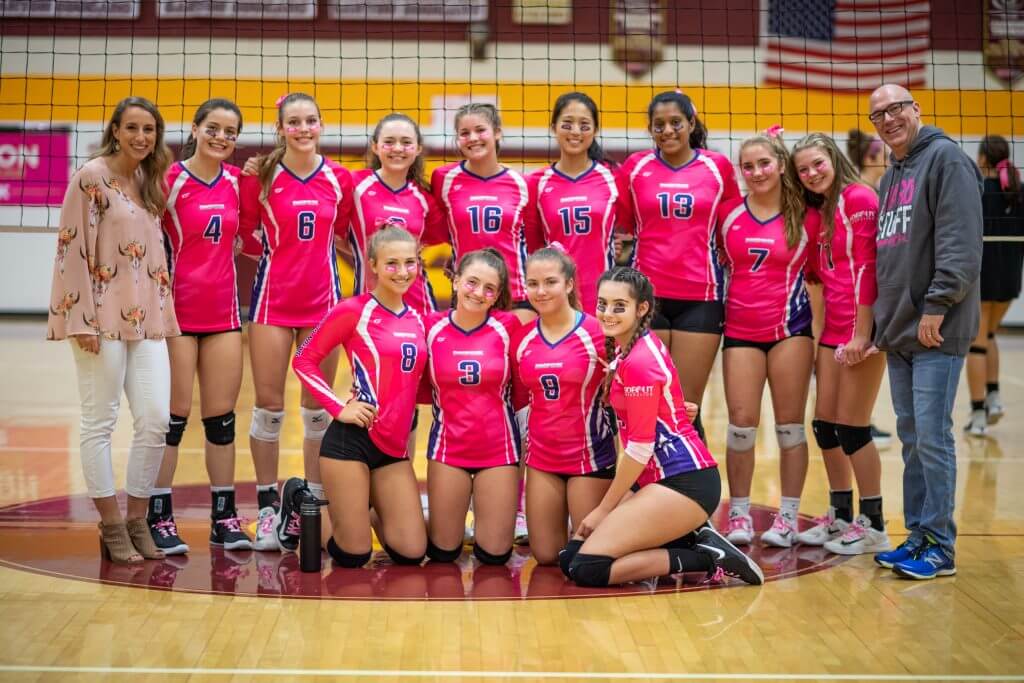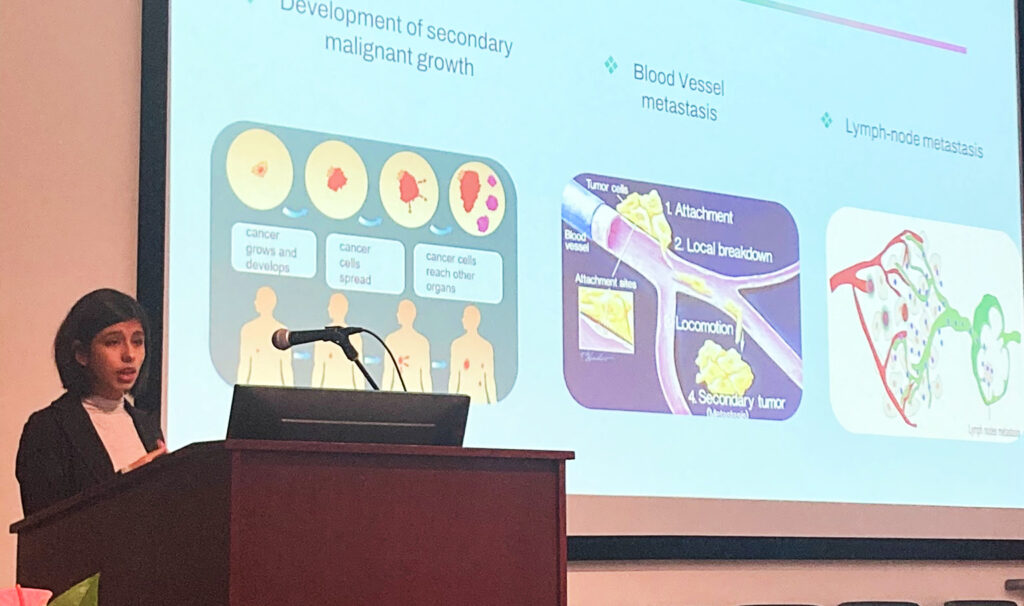As a physician-scientist, I have been part of the Side-Out trial since 2009. The major goal of the trial is the improvement of survival rates of metastatic breast cancer patients through the delivery of what is known as “precision medicine.” But what does the term really mean?
I have spent hundreds of hours at the microscope, looking at breast cancer lesions, so I know how to classify tumors based on their morphological characteristics and level of differentiation. However, even as a specialist in the field, it is impossible for me to know whether a patient will benefit from a given course of treatment just by looking at their lesions under the microscope. As scientists, we have come to realize that even when tumors have very similar characteristics under the microscope, they respond differently to chemotherapy and vary in their aggressiveness. The disparate outcomes we see in patients are the result of underlying differences at the molecular level. Every time I try to explain to friends and family what I do professionally, their eyes glaze over and their faces go blank when I introduce the concept of molecular level. So what does “molecular level” really mean?

DNA, RNA, and proteins are the molecules that carry out all of our bodily functions; they are our blueprint (DNA) and the engine of our cells (proteins). Changes within these “macromolecules” are the underlying cause of cancer and such changes can vary widely across patient populations. So back to the microscope: what appears homogeneous to the eye (even a trained one), is actually heterogeneous in terms of DNA mutations, RNA expression, and protein composition and activation. Here is where the idea of precision medicine for cancer patients comes into play. Precision medicine does not use a “one-size-fits-all” approach, in terms of prevention or therapy. Precision medicine holds that we are different as individuals, we experience diseases differently, and we respond to environmental and behavioral factors in a myriad of ways. The field of oncology embraced this concept a number of years ago. As a consequence, genomic and proteomic testing are offered to cancer patients (albeit to different degrees), by academic institutions and community hospitals to establish what tailored treatment each patient may benefit from.
So why is the Side-Out trial so special? First, the trial pioneered the use of a “multi-OMIC” approach where we went beyond genomic analysis and collected DNA, protein and protein activity information for each patients’ tumor.

Second, we have a team of physicians that is highly qualified to deliver personalized treatment to cancer patients. Patients have access to the trial at four centers across the United States, where they find leading-edge oncologists who specialize in breast cancer. Each patient receives a biopsy of one of their metastatic lesions, and a small piece of that tissue is sent to four different laboratories. The multi-OMIC molecular profiling the four labs provide is comprehensive and integrates genomic and proteomic data to identify what is driving the growth of the metastatic lesion(s) in each individual patient. Such a comprehensive approach is quite unique. It provides an incredible amount of information to treating physicians, and the information is used as a guide to select the next round of treatment.
I am writing this blog on my way back home from the San Antonio Breast Cancer Symposium, an annual meeting in which medical doctors and scientists come together to share new discoveries in breast cancer.  I have been thinking about our work a lot in the past few days, and I am extremely proud of what we offer our patients. We are at the forefront of personalized treatment, and we are innovative in our approach. The more I think about the Side-Out trial, the more amazed I am at the way we are achieving our common objectives by bringing so many different skills to the table. The athletes raise money and win games, which allows us to perform our work; each patient is a “match” we are competing against cancer to win. But what have we learned from all of our efforts? That by using this approach, we can slow the progression of the disease in approximately 50% of the patients, as we have shown in the first Side-Out trial we conducted. This translates into patients being with their families for longer, being present at their children’s graduations and creating other milestone memories. Without a doubt, there is still a lot more work to be done, but we have outstanding teams on the floor, and we will move forward in this journey one match at a time.
I have been thinking about our work a lot in the past few days, and I am extremely proud of what we offer our patients. We are at the forefront of personalized treatment, and we are innovative in our approach. The more I think about the Side-Out trial, the more amazed I am at the way we are achieving our common objectives by bringing so many different skills to the table. The athletes raise money and win games, which allows us to perform our work; each patient is a “match” we are competing against cancer to win. But what have we learned from all of our efforts? That by using this approach, we can slow the progression of the disease in approximately 50% of the patients, as we have shown in the first Side-Out trial we conducted. This translates into patients being with their families for longer, being present at their children’s graduations and creating other milestone memories. Without a doubt, there is still a lot more work to be done, but we have outstanding teams on the floor, and we will move forward in this journey one match at a time.




